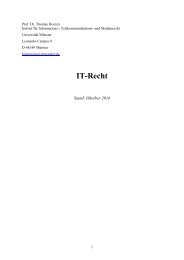3d4yVkKMl
3d4yVkKMl
3d4yVkKMl
You also want an ePaper? Increase the reach of your titles
YUMPU automatically turns print PDFs into web optimized ePapers that Google loves.
- 52 -<br />
scientific advantages over another. Rather, the Court seeks here only to evaluate whether the<br />
evidence supports a conclusion that the sample sizes are reasonable in relation to achieving<br />
JARPA II’s stated objectives.<br />
173. The Court begins by considering the way that Japan set the target sample sizes for fin<br />
and humpback whales.<br />
(1) Fin and humpback whales<br />
174. For fin whales and humpback whales, the annual JARPA II lethal sample size is<br />
50 per species. The JARPA II Research Plan states that the same conditions and criteria were used<br />
to set sample sizes for the two species, so the Court considers them together.<br />
175. Sample sizes for both species were calculated on the basis of two “research items”:<br />
apparent pregnancy rate and age at sexual maturity. The JARPA II Research Plan describes these<br />
research items, which according to Japan involve the examination of ear plugs and reproductive<br />
organs, as essential to the objectives of the programme. The Research Plan does not indicate the<br />
reason for using only two parameters to establish the sample sizes for these two species, as<br />
compared to the larger number of parameters used to calculate the minke whale sample size (see<br />
paragraph 182 below). As noted above, however (see paragraphs 165-166), a review of the<br />
JARPA II Research Plan establishes that decisions concerning, for example, the particular rate of<br />
change to detect, among other relevant variables, have a pronounced impact on the resulting sample<br />
size.<br />
176. Although the JARPA II Research Plan sets forth possible sample sizes for fin and<br />
humpback whales that contemplate both six-year and 12-year research periods, the plan explains<br />
that researchers chose to use the 12-year research period for both species. It states that a<br />
six-year period would be “preferable since the research programme will be reviewed every<br />
six years” but would require “large” sample sizes. The Research Plan states that a 12-year period<br />
was thus chosen as a “precautionary approach”. In the oral proceedings, Japan offered an<br />
additional reason for the choice of a 12-year period: that a shorter period is unnecessary for these<br />
two species because implementation of the RMP for fin and humpback whales is not yet under<br />
consideration.<br />
177. The Court does not need to decide whether a particular research period, taken in<br />
isolation, is more or less appropriate for a given species of whales. The selection of a<br />
12-year period for two of three species, however, must be considered in light of other aspects of the<br />
design of JARPA II, including the selection of a six-year research period for detecting various<br />
changes in minke whales. In particular, Japan emphasizes multi-species competition and<br />
ecosystem research as explanations for the minke whale sample size of 850, as well as for<br />
including fin and humpback whales in the programme. JARPA II was designed with a six-year



